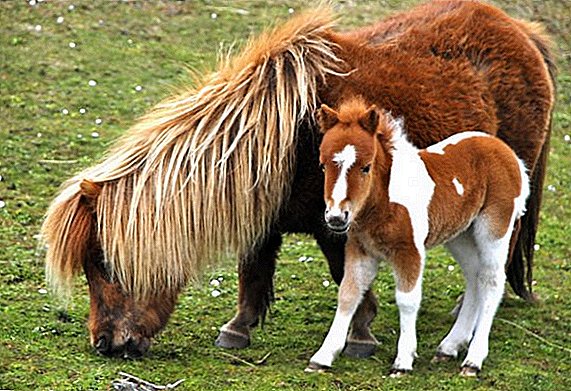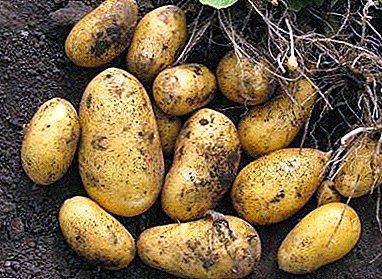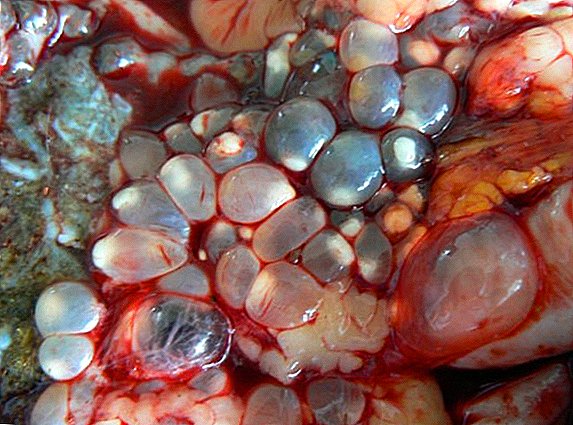 Cysticercosis in rabbits is a big problem for farmers, since this disease has practically no pronounced clinical picture, and an effective treatment strategy has not yet been developed. However, there is a high risk of infecting animals if there are carnivorous domestic animals (dogs and cats) on the site. About what constitutes a disease, how it can be recognized and prevented, we will tell later in the article.
Cysticercosis in rabbits is a big problem for farmers, since this disease has practically no pronounced clinical picture, and an effective treatment strategy has not yet been developed. However, there is a high risk of infecting animals if there are carnivorous domestic animals (dogs and cats) on the site. About what constitutes a disease, how it can be recognized and prevented, we will tell later in the article.
What is cysticercosis in rabbits
Cysticercosis is a parasitic disease caused by a tapeworm (cestode), depending on the location of the pathogen, affecting soft tissues, internal organs and muscles, central nervous system organs and bones. Cysticercosis is not caused by tapeworms themselves, but their larvae are Finns or Cysticercus (Cysticercus pisiformis), which is why this ailment is also called Finnoz.  Rabbits, and in the wild, hares, are only intermediate hosts for tapeworms, the final owners are dogs, in rare cases - other carnivores. In rabbits, this disease is called pysiform cysticercosis, as they are intermediate hosts of the parasite.
Rabbits, and in the wild, hares, are only intermediate hosts for tapeworms, the final owners are dogs, in rare cases - other carnivores. In rabbits, this disease is called pysiform cysticercosis, as they are intermediate hosts of the parasite.
Did you know? A person can parasitize up to 250 species of different worms. Their size can be from 0.5 mm to 15 m.
The causative agent and the development cycle of the disease
The causative agent of the disease is the larva of the pork tapeworm - cysticercus. Infected animals along with faeces release into the environment segments of the parasite containing hundreds of eggs. An intermediate host enters the body through infected grass (hay) and water. Once in the rabbit's stomach, the parasites are released from the egg membranes and migrate through the stomach walls to the liver, some can reach the lungs, heart, brain and other organs with blood.  After the cysticercus is attached to the tissues, its larval development ends after 75 days. Then, when eating rabbit flesh, the larvae enter the organism of their final host, where they turn into adult individuals of the pork tape in 45-65 days. According to the results of the autopsy, the main places of cysticercus attachment are the following organs:
After the cysticercus is attached to the tissues, its larval development ends after 75 days. Then, when eating rabbit flesh, the larvae enter the organism of their final host, where they turn into adult individuals of the pork tape in 45-65 days. According to the results of the autopsy, the main places of cysticercus attachment are the following organs:
- large gland;
- space in the peritoneum;
- liver;
- lungs and pleura of the diaphragm.
How to recognize the symptoms
The illness can proceed chronically and acutely, if at the same time a large number of eggs are ingested into the body. In most cases, it is the chronic course of the disease, in which the symptoms are lubricated. The clinical picture will depend on the intensity of the invasion, the age of the animals and the general state of health, the stage of larval development of cysticerci.
Important! Young rabbits aged 1-3 months are especially vulnerable - it is at this age that the highest mortality from cysticercosis is observed.
Typically, the infection is detected when the carcass is killed and the carcass is opened. In infected individuals, there are peculiar bubbles on the liver and digestive organs that are filled with a clear liquid, their size can reach from 3 to 15 mm (like a pea or walnut), a hooked head can be seen on the surface and suckers. These vesicles are the larvae of the bovine tapeworm, which cause cysticercosis. 
With the simultaneous ingestion of a large number of eggs, the following clinical picture may appear in rabbits:
- severe weakness, lethargy, inactivity;
- When massaging the abdomen, pain may occur, especially in the liver, which is noticeable by the disturbed behavior of the rabbit;
- weight loss, exhaustion;
- food refusal and intense thirst;
- pallor of mucous membranes;
- abortions in sukrolnykh rabbits.
Learn how to treat rabbit diseases and whether they pose a threat to human health.
Diagnosis and pathological changes
In life, cysticercosis can be detected through a special CSC analysis with a cysticercotic antigen. This substance is injected subcutaneously between the shoulder blades, the reaction is studied after only a few hours. In infected individuals, there is a significant thickening at the injection site (from 3 to 7 mm), in healthy rabbits there is no visible reaction at the injection site. However, due to the nonspecific clinical picture, no in vivo diagnostic measures for rabbits have been developed.  In most cases, the diagnosis is established already at the opening. In infected individuals, the liver is destroyed, healthy liver tissue is filled with connective tissue, and white cords can be observed in the organ. The liver is enlarged, it can be a dark maroon color. In acute invasion, bleeding can occur inside the abdominal cavity, peritonitis. Autopsy reveals clots in the abdominal cavity, signs of liver cirrhosis, and an abundance of cysticerci attached to internal organs.
In most cases, the diagnosis is established already at the opening. In infected individuals, the liver is destroyed, healthy liver tissue is filled with connective tissue, and white cords can be observed in the organ. The liver is enlarged, it can be a dark maroon color. In acute invasion, bleeding can occur inside the abdominal cavity, peritonitis. Autopsy reveals clots in the abdominal cavity, signs of liver cirrhosis, and an abundance of cysticerci attached to internal organs.
Did you know? In the brain cysticercus can live from 5 to 30 years.
Treatment
Today there is no effective treatment for this helminthiasis. However, you can meet the recommendations of veterinarians regarding the treatment of livestock with anthelmintics from the benzimidazole group: Mebendazole, Fenbendazole:
- "Mebendazole" used for group deworming for 3-5 days with a break of 2 days, mixed with morning portion of feed in the amount of 25 mg per 1 kg of live weight.
- "Fenbendazol" (may be sold under the trade names "Tsestal", "Panakur", "Febtal") is also used for group deworming from a ratio of 7.5 mg per 1 kg of live weight. The drug should be mixed with morning food, the course of treatment is 3-5 days.
 Treatment must necessarily be coordinated with the veterinarian to clarify the effective therapeutic dosages and duration of the course.
Treatment must necessarily be coordinated with the veterinarian to clarify the effective therapeutic dosages and duration of the course.Is it possible to eat the meat of an infected rabbit
It is believed that after careful hours of heat treatment of the carcass of infected animals can be eaten, the insides are subject to mandatory disposal. However, many breeders refuse to eat the meat of infected animals, because it contains toxins and waste products of cysticerci, which even after heat treatment may not disintegrate. After a thorough examination and heat treatment, the flesh can be fed to domestic animals, the affected insides are subject to mandatory disposal.
Read also about how to slaughter a rabbit and how useful rabbit meat is.
Preventive actions
Since dogs are the main source of spreading the disease, it is necessary to carry out a set of preventive measures to reduce the risk of cysticercus infection:
- To conduct regular deworming of domestic dogs on the farm (at least 4 times a year).
- After this, animal feces must be burned or buried in special manure depots.
- Do not allow feces to fall on the grass and soil in the place where the rabbits are kept.
- Do not allow dogs and cats to enter the area where crops are raised for rabbits, to the places of storage of feed and slaughter of animals.
- Keep guard dogs on a leash.
- Reduce the population of stray dogs.
- The corpses of rabbits affected by cysticercus, disposed of by burning or burying in special cattle graves.

For deworming use hydrobromic arecoline at the rate of 0.01-0.03 g per 1 kg of animal weight. The drug is added to the minced meat and fed after 18 hours of fasting. You can also use any other, more modern, deworming drugs, the use of which does not require a prior starvation diet: "Azinoks", "Piradek", "Pratel" and others.
You can also give the stock of rabbits the drug "Mobenvet" 10% (granulate) for 1-1.5 months, mixing it into the morning portion of feed at the rate of 20 mg per 1 kg of weight. Obviously, the rabbits need to be fed only with high-quality feeds, kept clean, and strictly comply with sanitary and preventive measures.
Important! Cysticercus remain viable in the carcasses of dead animals up to 72 hours.
Since the disease has no treatment, every effort should be made to prevent cysticercosis. It is necessary to carefully observe the sanitary and hygienic norms when keeping rabbits, timely and regularly carry out de-worming of domestic animals, properly process carcasses before eating.












